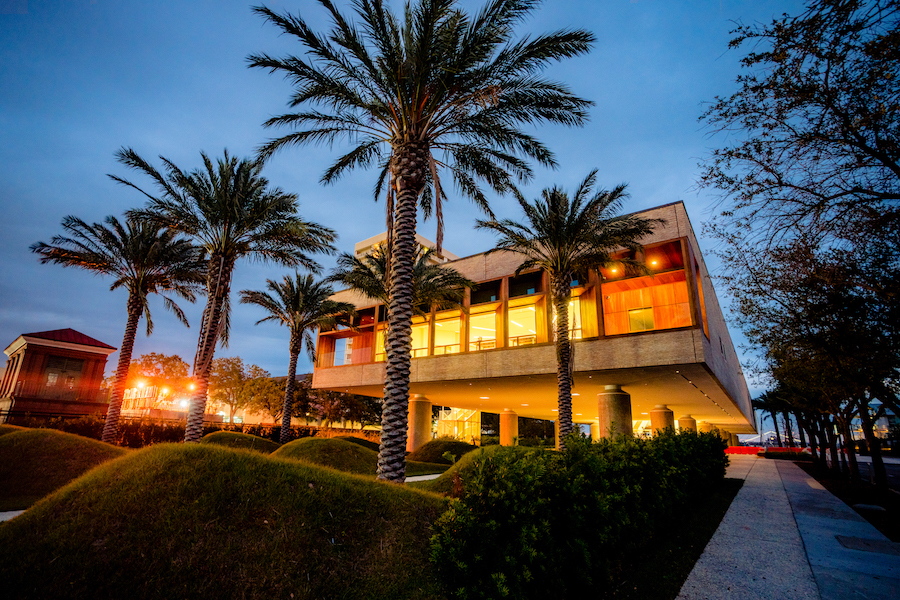NY Times: Best Art of 2023
Invigorating, Surprising, Sometimes Even Violent Color
Color has a life all its own. Without art, without people, it is everywhere, one of the natural wonders of the world. Still what people have managed to do with it sometimes seems miraculous, a gift. Especially in art, where its generosity and warmth become even more direct. Many of my fondest art memories this year involved powerful doses of saturated or unusual color, manifest in a variety of materials and techniques.
International African American Museum in Charleston, S.C., and ‘Africa Fashion’ at the Brooklyn Museum
In the harbor at Charleston, S.C., on the site of a pier where, in the early 18th and 19th centuries ships carrying tens of thousands of enslaved Africans deposited their human cargo, the long-planned and much-delayed International African American Museum finally opened last June. It’s the first major new museum of African American history in the country to bring Africa itself fully into the story of the Afro-Atlantic passage, and it does so through an absorbing assemblage of historical objects, ever-growing archives, multimedia installations and new art. (Read our critic’s notebook on the museum.)
And giving a sense of global African culture in the present, at first hand and exuberant full force, there was the sunburst of an exhibition called “Africa Fashion” that traveled from London to the Brooklyn Museum, where it offered a lesson in historical and political showing-and-telling that the Met’s Costume Institute might learn from. (Read our review of “Africa Fashion.”)
Edvard Munch at the Clark Art Institute
It started with two historic exhibitions that looked afresh at the innovations in color and paint handling that made early Western modernism possible. The summer brought “Edvard Munch: Trembling Earth,” a survey of his career at the Clark Art Institute in Williamstown, Mass., that concentrated on his involvement with nature and the landscape. The show introduced a less anguished Munch, whose improvisatory stain painting and fresh unexpected colors were ahead of their time. (Read our review of “Edvard Munch: Trembling Earth.”)
Further adventures in loose painting and bold colors arrived in October with “Vertigo of Color: Matisse, Derain and the Origins of Fauvism,” on view at the Met through Jan. 21. It examined the first, possibly shortest modern art movement of the 20th century, which solidified during the summer of 1905 when Henri Matisse and André Derain worked side-by-side in the South of France. It came to be labeled “les Fauves,” or “the wild beasts,” amid the scandal their work ignited at the Salon d’Automne that fall. The artists were influenced by Munch’s work, but they went for stronger colors and juicier surfaces. Whether or not this show breaks new art-historical ground, it should earn Fauvism an expanded presence in the annals of modernism. (Read our review of “Vertigo of Color.”)
Henry Taylor at the Whitney Museum of American Art
“Henry Taylor: B Side” at the Whitney Museum (through Jan. 28) didn’t take this challenge lying down. This thrilling retrospective, which originated at the Museum of Contemporary Art in Los Angeles, established the L.A.-based artist, now 65, as one of the greatest painters of his generation. His subject is the sometimes gritty reality of Black life in America — from family and community to politics and incarceration — conveyed without resorting to a traditionally realist style. His images are strengthened by his blunt sense of form and composition and his use of slab-like planes of color. With his lavish surfaces, Taylor’s figures often project a nearly physical presence. (Read our review of “Henry Taylor: B Side.”)
Bob Thompson, in 2 Places
The Henry Taylor show was helpfully preceded by the appearance of one of his heroes, the American painter Bob Thompson. Shows at Michael Rosenfeld Gallery and 52 Walker helped contextualize Taylor’s palette, and his use of figuration, with the work of this admired painter who died in 1966 at the age of 29. Often working on small canvases, Thompson made something new by transforming the figurative schemes of Renaissance paintings into bright, monochromatic silhouettes that had a completely different energy. In addition to the heightened retinal pleasure, these figures exploded the traditional symbolism of the Western palette and any hierarchical notion of skin tones. Suddenly color was random, without value, and its effect alternately celebratory, chaotic or even violent. (Read our review of the Thompson exhibitions.)



